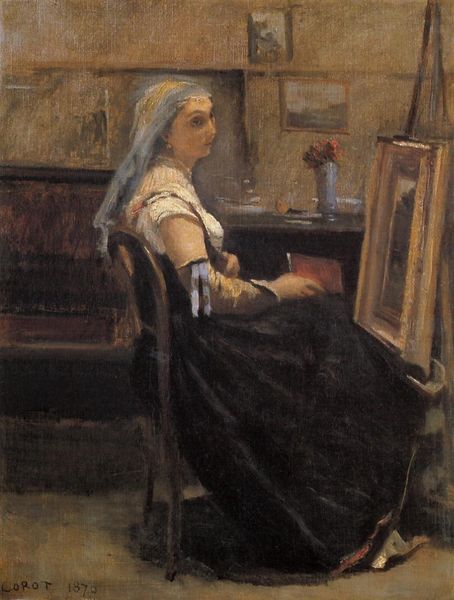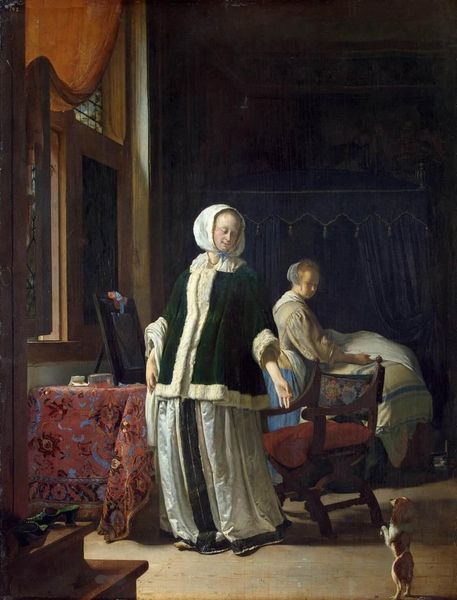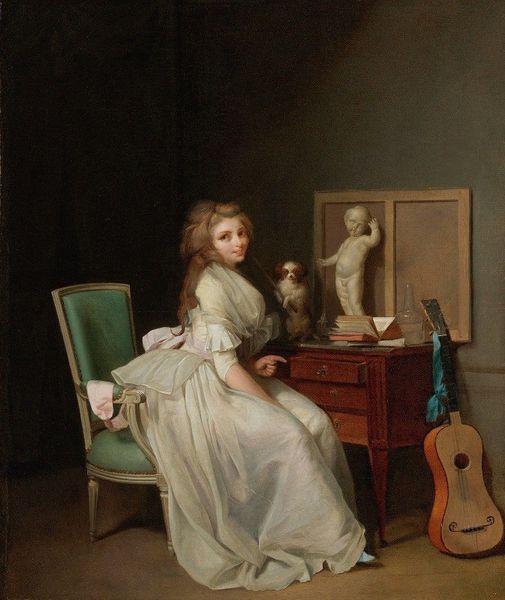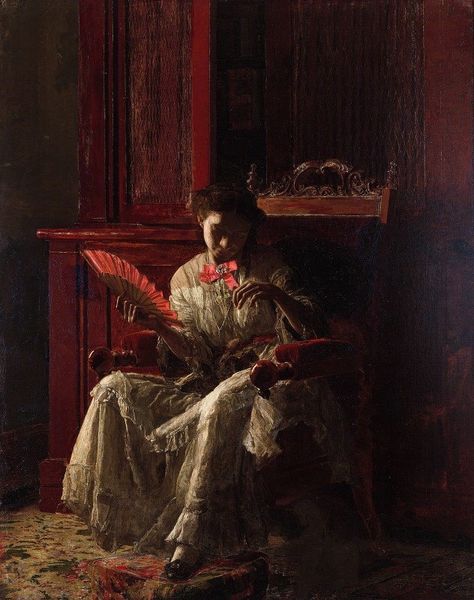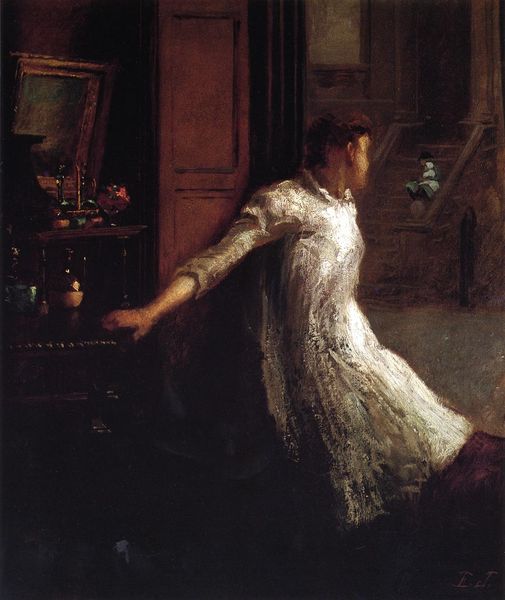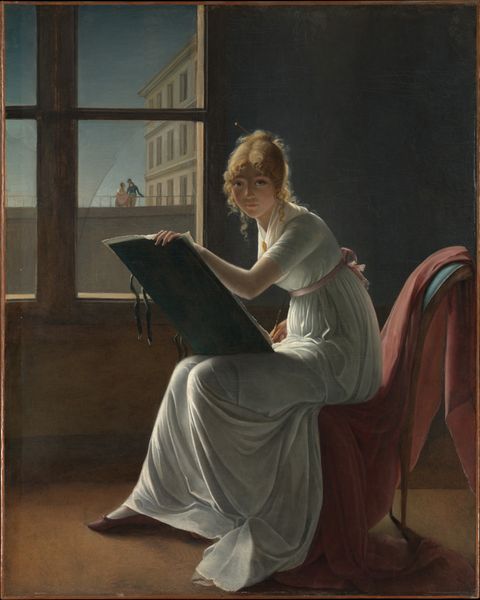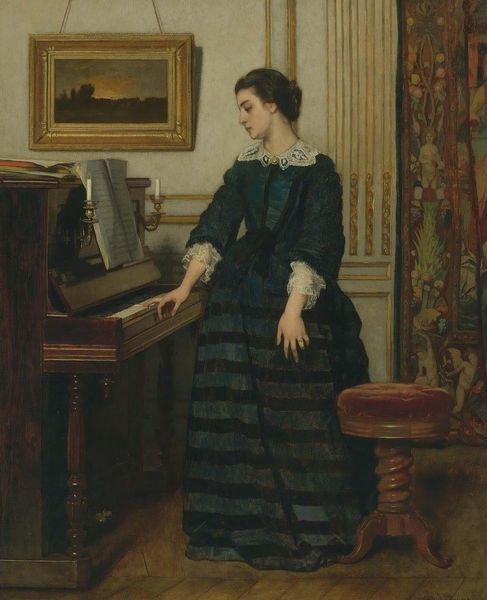
#
round frame
#
cosplay
#
sculpture
#
bird
#
3d character model
#
performing
#
culture event photography
#
costume
#
veil as a decoration
#
bubble style
#
abstract character
#
lady
#
sitting
Dimensions: 43 x 50 cm
Copyright: Public domain
Curator: Ah, "The Canary," painted by Jean-Baptiste-Siméon Chardin in 1751, currently residing at the Louvre. Editor: My first impression is one of subdued domesticity. The colors are muted, the light soft. It feels almost... hushed. Curator: Absolutely. Let's consider the materials. Chardin, a master of texture, captures the sheen of silk, the dullness of wood. The way he layers paint to evoke these surfaces—it speaks volumes about the craft of the era. The making of these things dictated so much of life's pace and value. Editor: And consider the symbols interwoven. The lady seated by her open box might suggest reflection, or even a turning point in her life. The birdcage... a popular emblem of confinement. Do we see a correspondence between her societal role and the bird’s physical one? Curator: Perhaps. We shouldn't forget the social context. These seemingly mundane scenes were bought and sold, supporting an entire economy of art production. This wasn't about lofty allegories, but about reflecting a certain level of comfort and a carefully constructed status within society. Editor: But even within that framework, these objects hold symbolic weight. Cages also speak of rarity, possession and preciousness, perhaps also revealing something about the woman's own perceived worth. Her veil hints at piety, suggesting an inner world, but perhaps also the expectations of proper female behavior. Curator: I am always fascinated by Chardin’s ability to make commodities visible and meaningful as markers within shifting economies of bourgeois life. Even something as seemingly small as a birdcage embodies these broader developments. Editor: For me, that bird and that open box offer us a peep into an intimate space, a kind of feminine interiority that both conceals and reveals, leaving it up to the viewer to construct their own interpretation. It's that lingering ambiguity which speaks volumes. Curator: It all circles back to materiality, to the visible reality of life and of class relations, even when cloaked with implication and innuendo. Editor: And there you have it—Chardin’s ‘Canary’, a small peek at grand debates. Curator: Exactly! I leave feeling grateful for what this discussion has exposed.
Comments
No comments
Be the first to comment and join the conversation on the ultimate creative platform.


